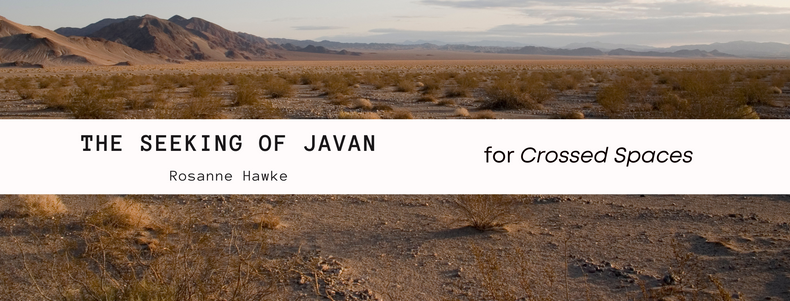Writing Javan
Javan began her life some years ago as a character in a YA novel I was writing called The Messenger Bird. In that story a girl called Tamar is grieving her brother when she sees a young man from the past who plays a violin. He is living in Tamar’s house 120 years before and has slipped into her time. The house in the story is my old stone Cornish farmhouse and it also becomes a character. In the first draft I had also written about a girl called Javan in the future who finds this same house, though now derelict. Javan had words to say but I cut them as I thought a character from the past is enough to suspend readers’ disbelief without adding a character in the future. Too many voices from different times would spoil the plot.
When I heard of Crossed Spaces, I thought of Javan. She was definitely in a crossed space. The words I had written about her before were not a story but a scene and snippets of dialogue and I didn’t know all that I’d need for a short story. To get to know my characters I usually draw mind maps. I wanted to know Javan’s hopes and desires, fears and skills. I discovered that she lives in an institution called Inside with other girls and wants to see what’s Outside; she doesn’t want to die yet and she wants to live in a family. Javan’s world is not family orientated. She lives in the aftermath of a post-climatic disaster. The girls are told that there were no other survivors except those living in intuitions. Javan discovers a huge deception. She does the forbidden and the impossible: she ventures Outside to seek the truth.
Javan’s story was too big for a short story as there would be so much to explain about her future world. I needed to think of one incidence in her life which could fit the bill of a snapshot in time which a short story needs to be. That was when I thought of her interrogation – her story and environment would all be revealed then. And she could tell the account herself. Thus, the short story became her monologue giving her defence in what led up to her forbidden act.
During the editing process, the editor suggested Javan show more of her story rather than tell it, so that there is more interaction with other characters and dialogue that she recounts. This has made Javan’s monologue more immediate and relatable to the reader.
In writing Javan’s story I wanted to explore what our world would be like with no family groups, no cultures, no faith. Outside, Javan discovers that all these things which had been denied her are still being practised in poor settlements.
I have often wondered if Javan should have her own novel and so this story became the exploration of her character with a larger format in mind. At times I have written a short story before I’ve written the novel, as in The Truth About Peacock Blue. This YA novel grew out of the story ‘Just a Schoolgirl’ included in UNICEF’s 2013 YA anthology, Reaching Out: Stories of Hope, edited by Mariah Kennedy. However, so far Javan has not managed to convince me about writing her novel. We’ll see.

